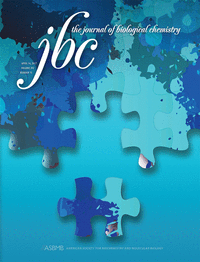 A biology society is hiring three editors to screen images in submissions to its journal, Journal of Biological Chemistry — which we think is a great idea.
A biology society is hiring three editors to screen images in submissions to its journal, Journal of Biological Chemistry — which we think is a great idea.
We don’t typically mention job ads on our site, except when they become relevant to cleaning up the literature — and with the latest job ad, the JBC joins the ranks of other journals that have taken a proactive stance against image problems, including manipulation. The publisher, American Society for Biochemistry and Molecular Biology (ASBMB), plans to hire three “Technical Image Editors,” which will screen the images contained within the thousands of papers the journal publishes each year, many of which contain multiple panels and supplemental data.
Kaoru Sakabe, Data Integrity Manager at ASBMB, told us:
We hope that by screening images during pre-publication, we can catch these errors and help authors correct them. We believe that this pre-publication step will also improve the overall quality of the figures because the Technical Image Editors will help authors prepare their figures for print (i.e., correct resolution, size, etc).
She added:
This is one in a series of initiatives we’ve undertaken to educate our authors and the community (the Due Diligence column in ASBMB Today and our workshops on publishing reproducible research are other examples).
Here’s the job description:
The American Society for Biochemistry and Molecular Biology is seeking a Technical Image Editor to oversee screening images submitted to a fast-paced scientific journal. The Image Editor will screen art for adherence to journal policies, work with authors to obtain high-quality figures suitable for publication, document/track issues with manuscripts, and other administrative duties. The Image Editor will also examine images to detect alteration or manipulation.
Initially, the editors will focus on submissions to JBC, but ASBMB plans to expand the role to include its other journals, Molecular & Cellular Proteomics and the Journal of Lipid Research.
We have given the ASBMB kudos in the past for hiring someone focused on publication ethics, and increasing the amount of information they provide about individual retractions.
Sakabe cited data from the Journal of Cell Biology, an early adopter of image-screening policies, which has found that approximately 1 in 4 accepted papers contained some time of image change that violated the journal’s policies. Approximately 1% included manipulated images that had an impact on the paper’s findings.
Sakabe noted:
As other publishers who screen images may tell you, this will likely put a small delay in the process, but we believe this will drastically reduce the number of Additions and Corrections we publish.
The publisher has already received applications, she added:
…we will keep the positions open until they are filled. There will be some lag time between hiring and screening as it will take up to 6 months for training.
Like Retraction Watch? Consider making a tax-deductible contribution to support our growth. You can also follow us on Twitter, like us on Facebook, add us to your RSS reader, sign up on our homepage for an email every time there’s a new post, or subscribe to our daily digest. Click here to review our Comments Policy. For a sneak peek at what we’re working on, click here.
A welcome initiative from JBC!
Hopefully, other journals will follow this lead and tighten up scrutiny for manipulated images.
A simple policy change could make the new editors’ jobs a whole lot easier.
All journals should require that uncropped/noncontrast adjusted gel or blot images be provided as supplemental figures. It is a simple matter to show this raw data with rectangles or other marks to indicate precisely how the figure was assembled. It would not be an undue burden on authors who would receive a benefit of presenting unimpeachable data.
The only downside is that a lot of the discussion about inappropriate image manipulation on PubPeer would become unnecessary. Some might consider this an upside.
“lot of the discussion about inappropriate image manipulation on PubPeer” is likely what led to JBC inititative.
Until journal ask reproduce the data, scientists are smart to manipulate the data one or other way. This won’t help much
I agree but still the harder it will be to publish manipulated data the better. And hopefully, it will also make the misconduct cases more clear cut by removing some of the gray zone.